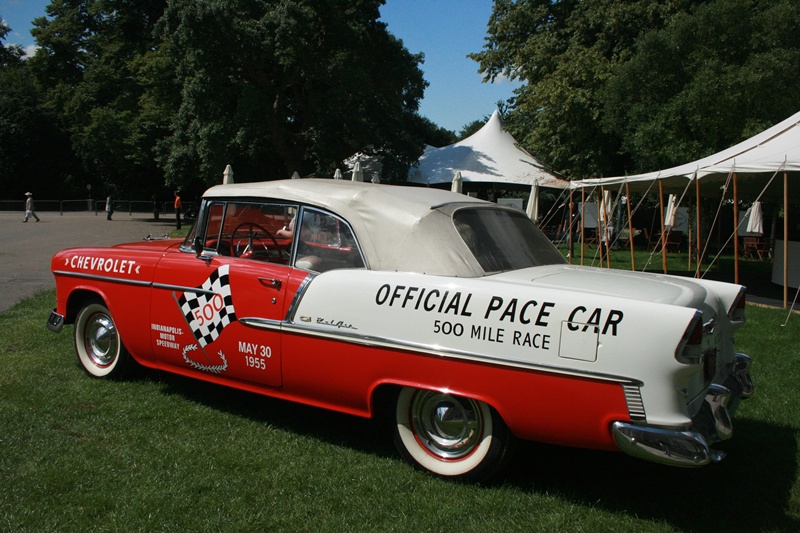
We are now entering what I consider to be the golden era of Indy Pace Cars.? Although the power and performance of the American automobile had increased substantially by 1954, the second half of the 1950s would showcase the horsepower race in all its glory.
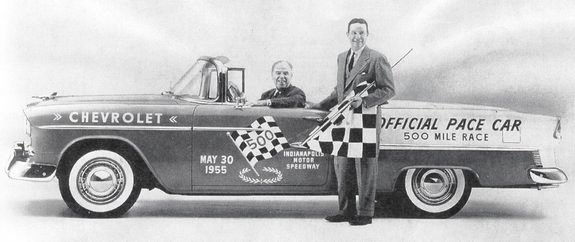
What else could have paced the race in 1955 other than the new Chevrolet.?? Although the industry was full of new models that year, hindsight would surely ratify that the 1955 Chevrolet was perhaps the most culturally significant new car since the 1932 Ford V8.?? Chevrolet Sales Manager, Thomas Keating got to drive the Gypsy Red and India Ivory Bel Air convertible. This photo shows Indianapolis Motor Speedway owner Tony Hulman next to the car.
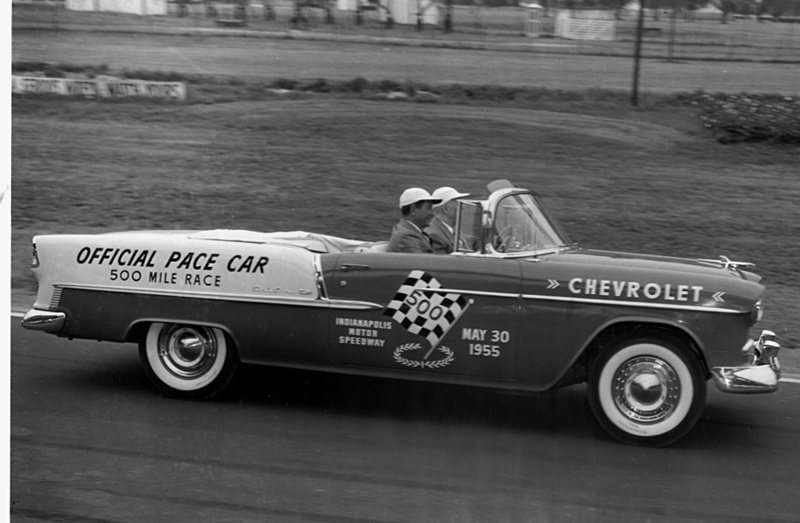
This car illustrates the rapid advances in engine design taking place during those years.? In 1955, a Chevrolet came to the race with the same horsepower rating (180) and from a smaller displacement as the much more expensive Hemi-powered New Yorker had brought to the race just four years earliers.? And who would have figured that the same basic engine design would still be pacing the race in 2012?
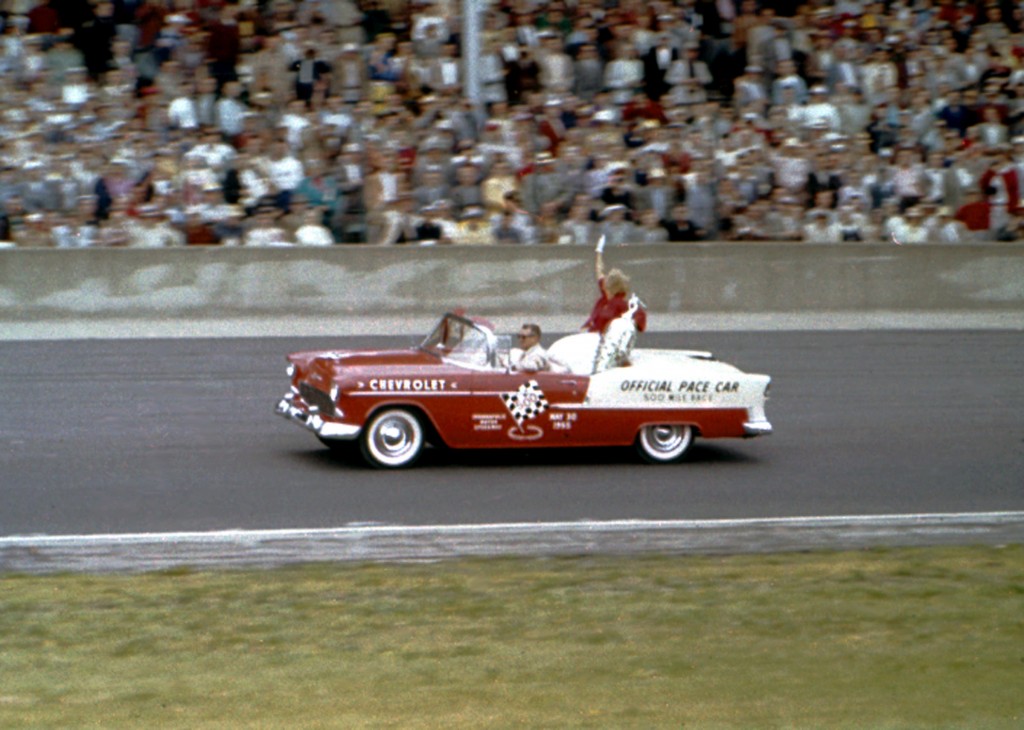
Chevrolet?s famous musical star Dinah Shore got at least one ride around the track.? See the USA in your Chev-ro-let!? The 1955 race itself was marred by the fatal crash involving Bill Vukovich, one of the great (and most popular) racers of the era.
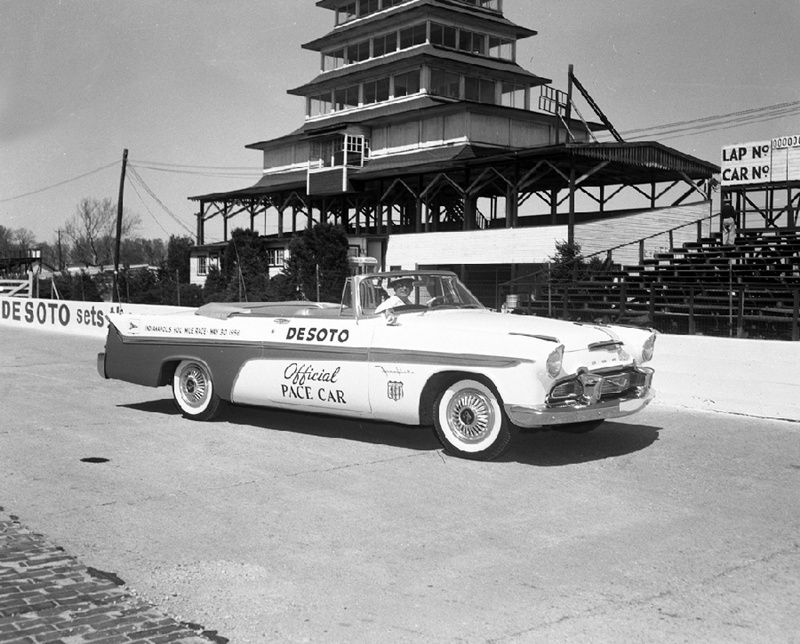
While all the world loves the 1955 Chevy, one of my own faves paced the race the next year.? With this Forward Look 1956 DeSoto, Chrysler Corporation was leading the field of thirty three cars for the third time in six years.? DeSoto Division president Irv Woolson drove the big hemi-powered convertible.? This DeSoto is, to my eye, one of the most attractive Pace Cars of all time.? This photo also shows the Speedway?s old wooden pagoda.? The pagoda was a track fixture, built to house press and?track officials during the race.? This one dated to the 1920s, and would be torn down following the 1956 race, to be replaced by a modern control facility.
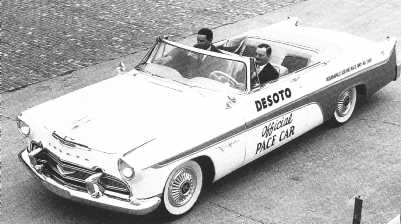
The ?56 model is also my favorite DeSoto of the V8 era.? I must not be alone, because DeSoto actually outsold Chrysler that year.? It is hard to imagine that only five years into the future, the DeSoto would join so many others in the museum of dead brands.
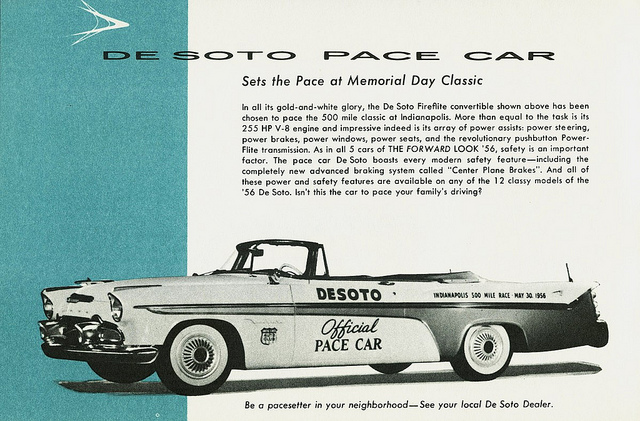
The Pace Car got a 341 c.i. hemi V8 from the Adventurer, which was helpful because we were now into an era where the Pace Car would enter the pits at over 100 mph.? The ivory and gold color combination with anodized gold trim on the wheelcovers and elsewhere made for a very attractive car in the estimated 300 ? 500 replicas that were made.? But for some reason, despite the number of replicas out there, there were not many good photos taken at the track.
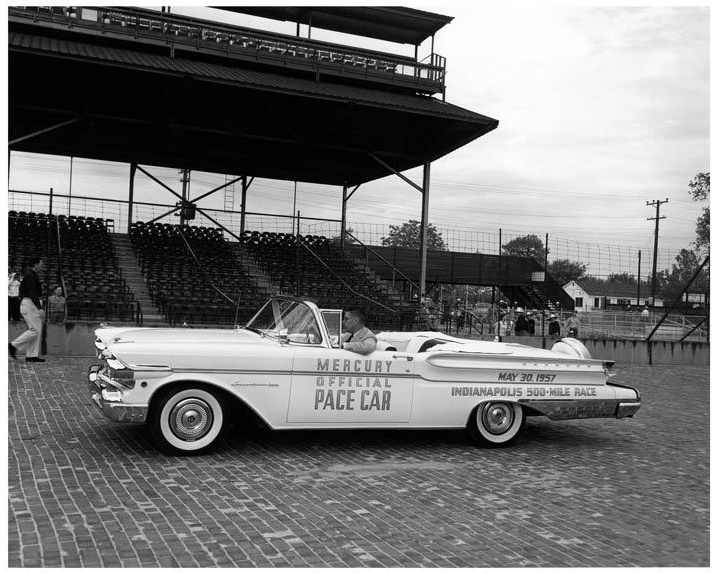
In 1957, the Ford Motor Company was finally at the track with something other than a flathead.? The 1957 was Mercury?s year, as the brand was finally set to enter the big time.? Mercury would go on to become a perennial contender in the middle priced field for decades to come.? No, wait.? That was the plan.? Actually, Mercury never took root in its new role, and would eventually revert to its traditional role as a Ford with more chrome (or in the 1970s, more Brougham).? But the ?57 model gave it a good try.
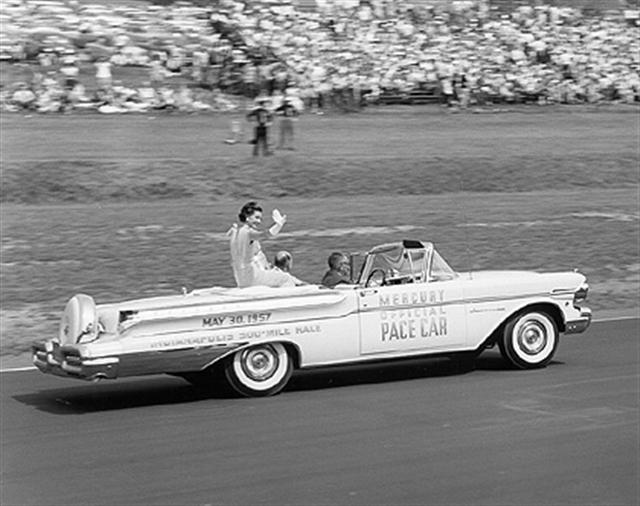
This 1957 Turnpike Cruiser was driven by Jack Reith, General Manager of Mercury.? The TC used a 368 c.i. version of the Y block that was normally found in Lincolns.? The pace cars were painted a light yellow called Sun Glitter.? Somewhere in the range of 700-1000 of these convertibles came with Pace Car decal kits.
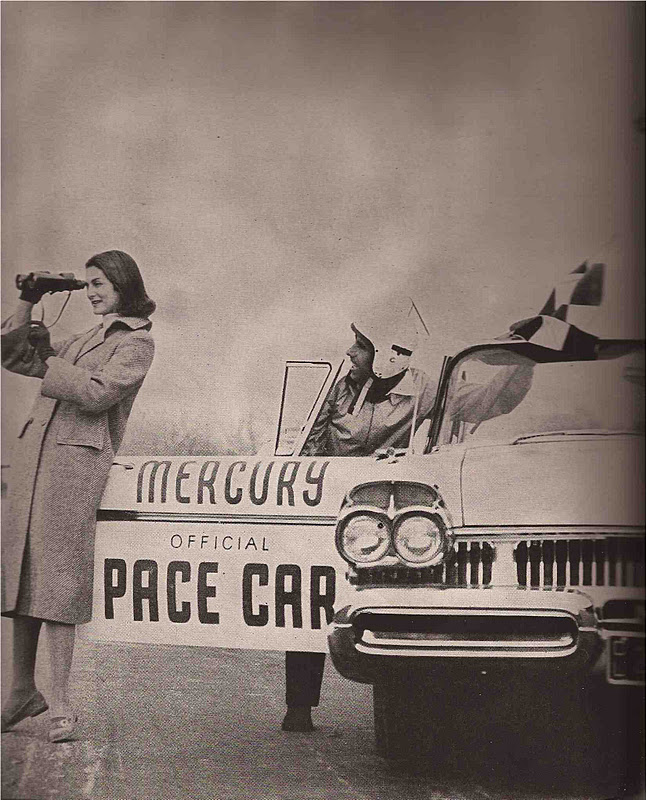
The actual car was won by Sam Hanks, who announced his retirement from the winners circle, and kept the car for thirty years.? After all, once you have won the Indianapolis 500 and obtained the keys to a new Turnpike Cruiser, what else is there to accomplish in life?? OK, besides getting Lauren Bacall too.? It has been reported that the Turnpike Cruiser convertible was introduced in Indianapolis in January of 1957 when the choice of Pace Car was announced, and that the very first one was the car to pace the race.
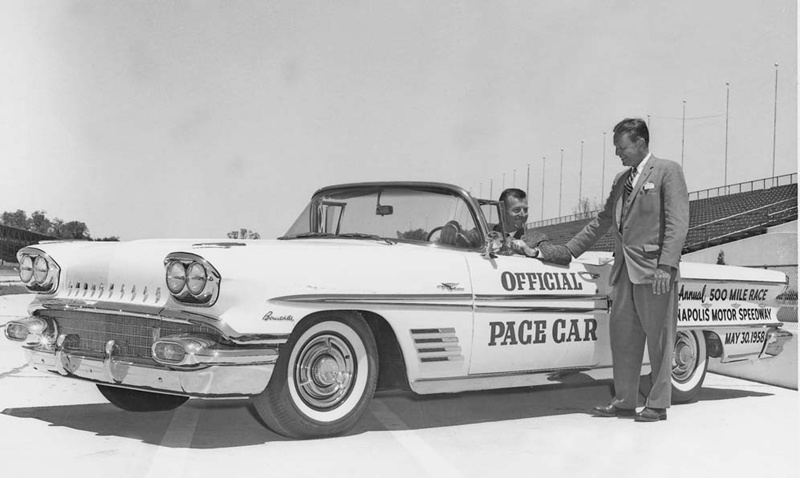
1958:?Bonneville comes to Indianapolis.? Bunkie Knudson?s Pontiac Division was turning up the heat in its quest to become General Motors? performance division.? This big Bonneville ragtop was a natural.? This year would be Pontiac?s debut year as the Pace Car.
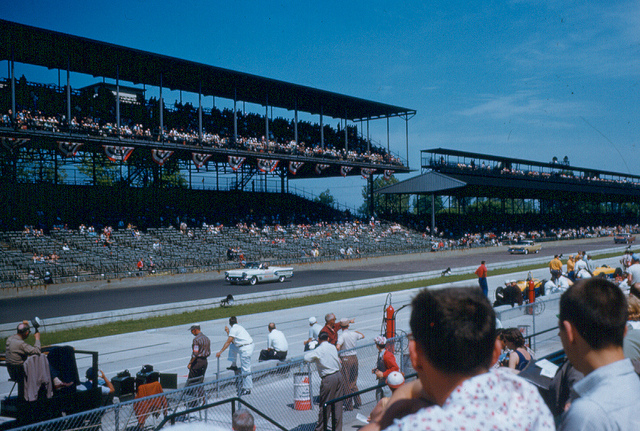
The big Pontiac 370 V8 with Tri-Power (triple 2 barrel carbs) was easily good for?300 horsepower, a figure that last year?s Mercury could only dream of out of its performance-impaired?Y block.? I will go to my grave wondering how Pontiac got away with the rocket on the side that mimicked that on the 49 Olds, but was bigger in every way.? Oldsmobile?s people must have been steaming about this.
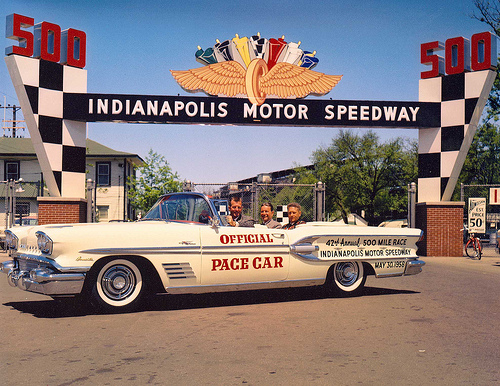
The 1958 model was a one-year-only car, and also marked the final year that the venerable Chief Pontiac?s likeness adorned the exterior of the car (although his silhouette would serve as a high-beam indicator for several more years).? Former racer Sam Hanks would pilot the big Bonnie.?? To me, this is one of the great Pace Car promo photos of all time, taken outside of the old main entrance to the Speedway.

GM was back for a second year in a row with a very different kind of car.? This Buick Electra 225 would also be driven by Sam Hanks.? It is reported that for two or three years during the late 1950s when the Auto Manufacturers Association banned racing activity, the Pace Cars were officially sponsored by local dealers.? This car was jointly sponsored by two Indianapolis area Buick dealers, although we can be sure that there was plenty of unofficial factory support.
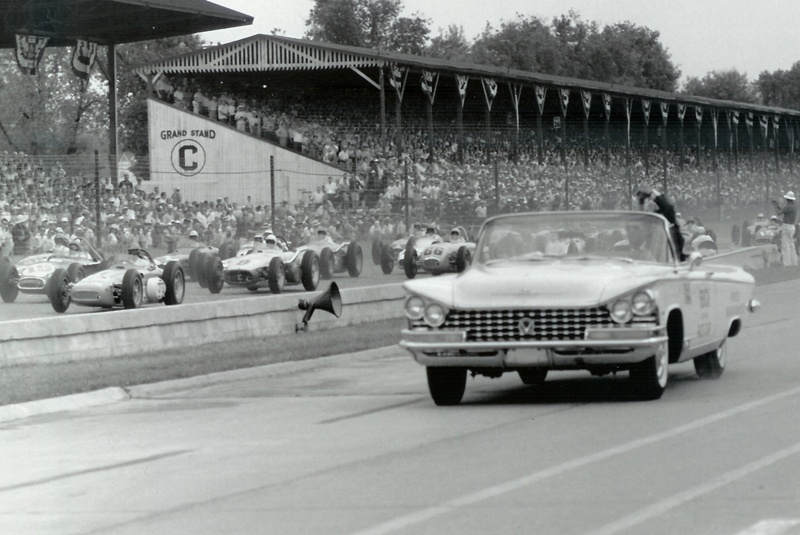
The 1959 Pace Car was the first one equipped with a? two-way radio in response to a multiple-car first lap accident in 1958.? The white Electra 225 convertible sported red bucket seats and loads of options.?? The big Electra 225 used the Buick nailhead 401 V8 which was rated at 325 horsepower, nearly double the standard 165 horsepower of the Pace Car Chevrolet of five years earlier, and about triple that of the 1950 Mercury that started the decade.
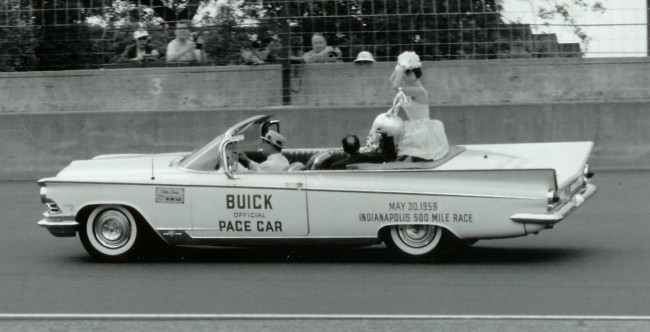
This Pace Car was won by Rodger Ward, and was reportedly one of the last cars to be driven as everyday transportation following the race.?? The eventual disposition of the 1959 Pace Car is a mystery, but if you have the time, you can check out one man?s exhaustive (and fascinating) search to determine whether his white ?59 Buick bucket seat convertible is THE actual Official Pace Car (here).
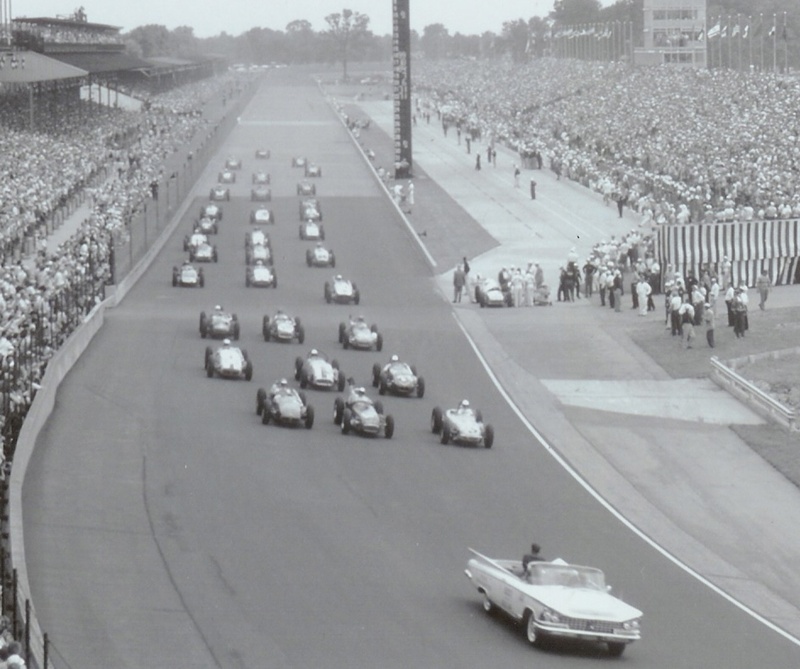
When I was a kid, my friend Tim?s dad had a framed color picture of the start of the 1959 race which hung on the wall of the family?s basement.? That picture of the thirty three cars led by this fast, angry Buick is the picture that comes to my mind at the start of every years race.
Next time, we will move into the sizzling ?60s.
type 2 diabetes occupy congress juan williams victor martinez alcatraz cruise ship martin luther king jr.
No comments:
Post a Comment